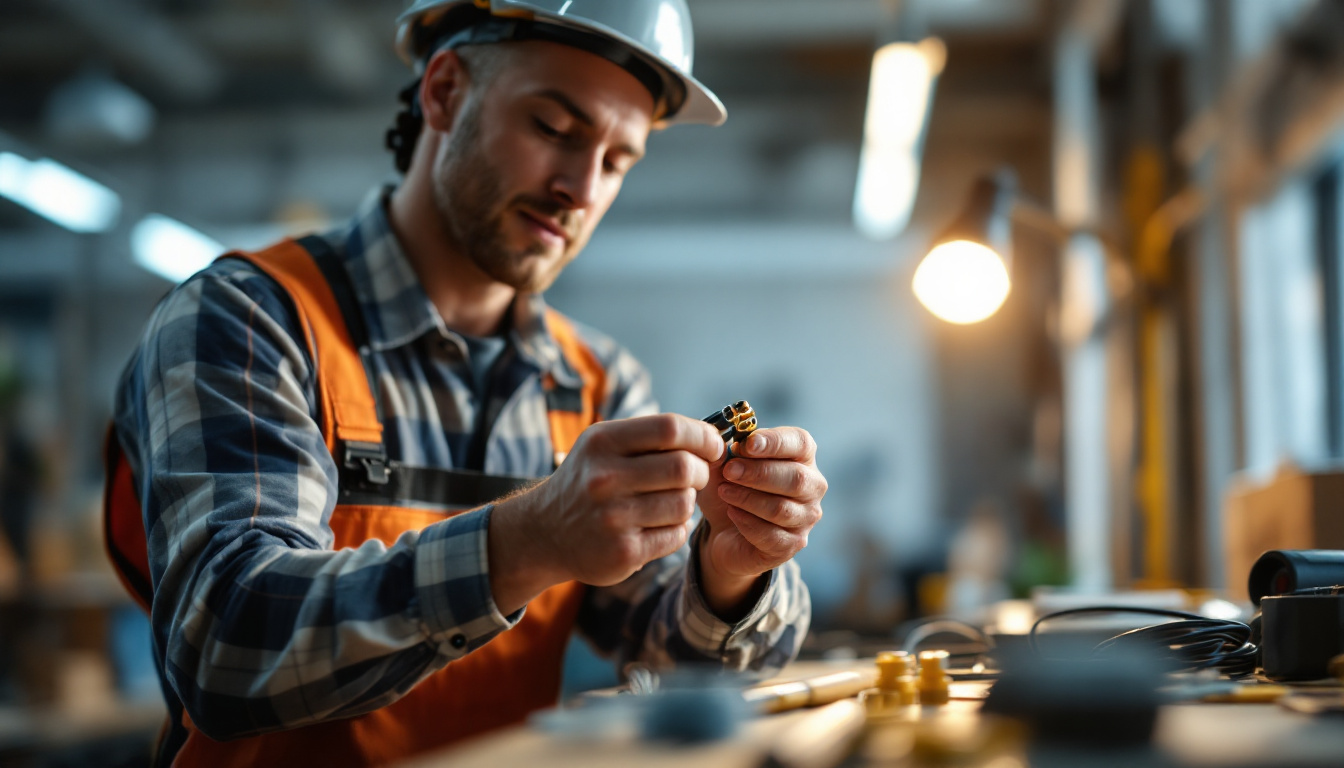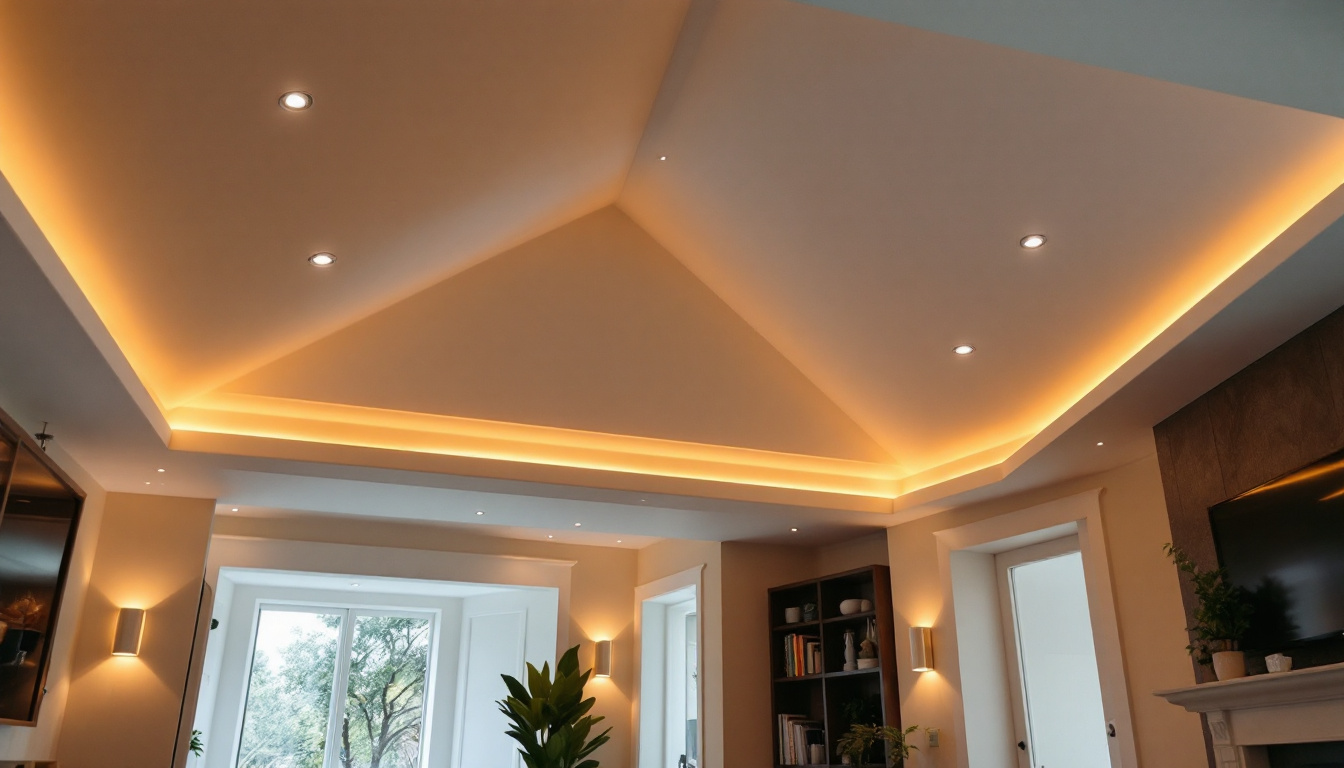

Lighting contractors play a pivotal role in ensuring that electrical systems are not only functional but also safe and efficient. One of the essential skills in this profession is the ability to connect wire connectors properly. This article delves into the intricacies of wire connections, the types of connectors available, and the benefits of mastering this skill for lighting contractors.
Wire connectors are essential components in electrical installations, serving as the link between different wires. They ensure that electricity flows smoothly and safely from one point to another. Understanding the various types of wire connectors and their applications is crucial for any lighting contractor. Properly selected and installed wire connectors can significantly reduce the risk of electrical failures, which can lead to costly repairs or even hazardous situations. Therefore, a solid foundation in the characteristics and applications of these connectors is vital for both safety and efficiency in electrical work.
There are several types of wire connectors, each designed for specific applications and environments. The most common types include:
Choosing the appropriate wire connector is essential for ensuring safety and functionality. Factors to consider include:
Moreover, understanding the installation process is just as important as selecting the right connector. Proper techniques, such as stripping the wire to the correct length and ensuring that the wires are twisted together securely before applying a twist-on connector, can greatly influence the effectiveness of the connection. Additionally, familiarity with local electrical codes and regulations can help ensure that the chosen connectors meet safety standards, further protecting both the installer and the end user. In a field where precision is key, taking the time to understand these components can lead to more reliable and efficient electrical systems.
Properly connecting wire connectors is not just about aesthetics; it is a matter of safety and efficiency. Faulty connections can lead to electrical failures, fires, and other hazards. Therefore, understanding the importance of making secure connections is vital for lighting contractors.
Electrical safety should always be a top priority for lighting contractors. Poor connections can result in arcing, which is a significant fire hazard. Additionally, loose connections can cause overheating, leading to equipment failure or damage. By ensuring that wire connectors are applied correctly, contractors can mitigate these risks effectively. Regular inspections and adherence to safety protocols can further enhance safety measures, allowing contractors to identify potential issues before they escalate. It is also essential to stay updated on local electrical codes and regulations, as these guidelines are designed to protect both the contractor and the end-user from unsafe practices.
Efficient installations are crucial for maintaining a profitable business. Properly connected wire connectors can reduce the likelihood of callbacks due to electrical issues. This not only saves time but also enhances the contractor’s reputation for quality work. Furthermore, investing in high-quality connectors and tools can streamline the installation process, allowing contractors to complete projects more quickly without sacrificing quality. Training staff on best practices for making connections can also lead to improved efficiency, as experienced workers are less likely to make mistakes that could lead to costly delays or rework.
In addition to safety and efficiency, the long-term reliability of electrical systems is heavily influenced by the quality of wire connections. Over time, poorly made connections can degrade, leading to intermittent failures that are difficult to diagnose. This not only affects the performance of lighting systems but can also lead to increased maintenance costs for clients. By emphasizing the importance of secure connections, contractors can help ensure that their installations stand the test of time, providing peace of mind for both themselves and their clients. Moreover, educating clients on the significance of regular maintenance checks can foster a strong relationship built on trust and reliability, further solidifying the contractor’s role as a knowledgeable and dependable partner in their projects.
Mastering the art of connecting wire connectors involves understanding the process and practicing the techniques involved. Here is a step-by-step guide to ensure a secure and effective connection:
Before starting, ensure you have all the necessary tools at hand. Common tools include:
Begin by stripping the insulation from the ends of the wires. The length of the exposed wire should match the requirements of the connector being used. Typically, ½ inch of exposed wire is sufficient for most connectors. Be careful not to damage the wire strands while stripping.
For twist-on connectors, hold the wires together and twist the connector onto the exposed wire ends. Ensure that the connector is tight and that no bare wire is exposed. For push-in connectors, insert the stripped wire into the designated slot until it clicks into place. For crimp connectors, position the wire in the connector and use the crimping tool to secure it firmly.
Once the connection is made, it is advisable to wrap the joint with electrical tape to provide additional insulation and protection. This step is especially important in environments where moisture or physical stress may be present.
For lighting contractors, mastering the techniques of connecting wire connectors can lead to numerous benefits that enhance both professional skills and business success.
By mastering the art of wire connections, contractors can significantly improve the quality of their work. Secure and reliable connections reduce the risk of electrical failures and enhance the overall performance of lighting systems. This commitment to quality can set a contractor apart in a competitive market.
Clients appreciate contractors who take the time to ensure that installations are done correctly. By providing high-quality workmanship and minimizing the chances of issues arising from poor connections, contractors can foster trust and satisfaction among their clients. Happy clients are more likely to refer others and return for future projects.
Properly connected wire connectors can lead to significant cost savings in the long run. Reduced callbacks and fewer repairs mean less time and money spent on rectifying issues. Additionally, high-quality connections can extend the lifespan of lighting systems, reducing the need for replacements and repairs.
While connecting wire connectors may seem straightforward, there are common pitfalls that contractors should be aware of to ensure optimal results.
One of the most common mistakes is using the wrong type of connector for a specific application. This can lead to weak connections and potential hazards. Always assess the requirements of the project and select the appropriate connector accordingly.
Improperly stripped wires can lead to poor connections. If the wire is stripped too short, it may not make sufficient contact within the connector. Conversely, stripping too much wire can expose bare metal, increasing the risk of short circuits. Take care to strip the wire to the correct length.
After making connections, it is crucial to test them before finalizing the installation. This can involve checking for continuity with a multimeter or ensuring that connections are secure. Neglecting this step can lead to future issues that could have been easily avoided.
Connecting wire connectors is a fundamental skill that every lighting contractor should master. By understanding the types of connectors, following proper techniques, and avoiding common mistakes, contractors can enhance the quality of their work, improve client satisfaction, and ultimately save costs. Investing time in learning and perfecting these skills will pay dividends in the long run, establishing a reputation for excellence in the lighting industry.
Ready to take your lighting projects to the next level? LumenWholesale is here to support you with high-quality, spec-grade lighting products at wholesale prices that can’t be beaten. Say goodbye to local distributor markups and hello to a vast selection of reliable lighting essentials that meet the highest industry standards. Plus, with free shipping on bulk orders, you can stock up on everything you need without worrying about hidden fees. Elevate your work with the perfect combination of quality, affordability, and convenience. Wholesale Lighting at the Best Value is just a click away. Start saving today!

Discover why purchasing emergency ballast in bulk from local distributors might not be the best choice.

Discover how recessed can lights can transform vaulted ceilings and boost your lighting business.

Discover essential insights into small screw light bulbs with our comprehensive guide tailored for lighting contractors.

Discover essential insights into recessed lighting with our comprehensive guide tailored for lighting contractors.
Get notified when NEW deals are released.
Optimize your budget with wholesale discounts.
Only top-quality, specification-grade lighting products.
No additional costs at checkout - what you see is what you pay.
We understand the unique needs of contractors.